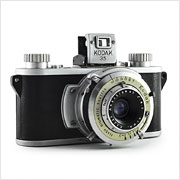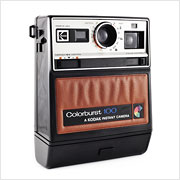Kodak Duex
The Kodak Duex is a collapsible basic medium format viewfinder camera introduced by Eastman Kodak in 1940 for 620 roll film. The Duex is the spiritual successor to the Kodak Duo series of 620 cameras which were designed by Dr. August Nagel (founder of Nagel, Contessa, and thus co-founder of Zeiss Ikon) and produced in the Nagel factory in Stuttgart shortly after the company was sold to Eastman Kodak. The Duo was made in Germany until Kodak shifted production to the United States due to the looming threat of conflict. Then, with the Second World War cutting off access to its German division, Kodak transitioned their 620 offerings from high quality folding cameras to inexpensive and relatively primitive models like the Duex.




































